To master sun-cooked meals, you'll need to focus on seven key temperature factors. Start by choosing dark cookware that absorbs heat efficiently, like cast iron or black enamel pots. Keep your food out of the danger zone (40-140°F) and monitor internal temperatures with a reliable meat thermometer. Position your solar oven to follow the sun's path, realigning every 20-30 minutes for consistent heat. Add proper insulation using materials like crumpled newspaper or neoprene sleeves, and always keep lids tightly sealed. Cook between 11am-3pm for best results. These foundational tips will help you access the full potential of solar cooking.
Choose Dark Cookware
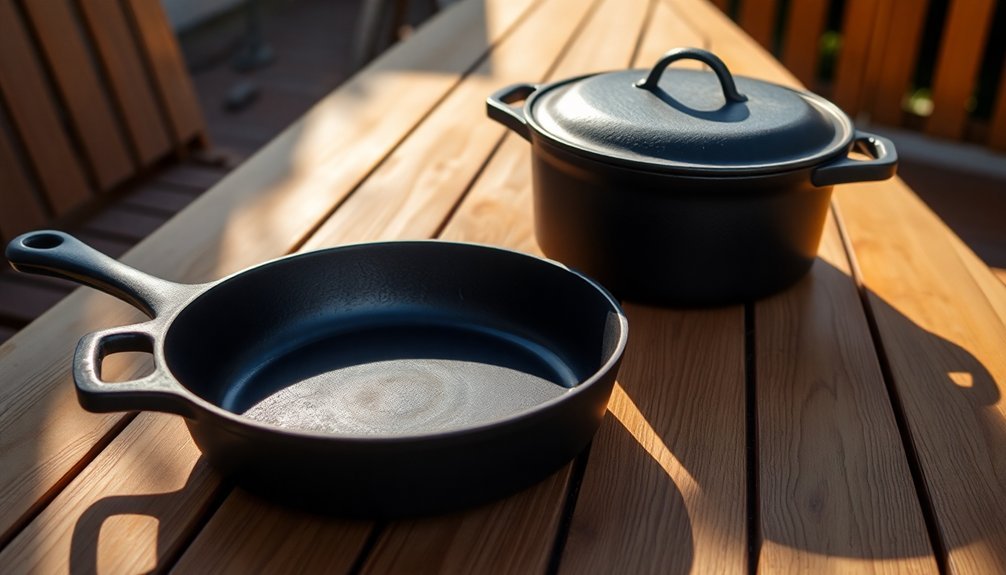
When selecting cookware for solar cooking, dark-colored pots and pans are essential since they absorb and convert sunlight into heat more efficiently than lighter alternatives.
Cast iron, black enamel, and dark ceramic cookware are your best options as they excel at heat retention and moisture control during the cooking process. Since solar ovens typically cook at temperatures above 200°F, you'll need cookware that can withstand sustained heat exposure.
You'll want to avoid reflective surfaces like aluminum foil, which deflect sunlight away from your food. Instead, opt for thin black metal pots made of aluminum or steel, as they heat up quickly.
Choose cookware that's shallow rather than deep to guarantee your food cooks evenly. For even better results, look for pots with dark, tight-fitting lids to trap heat and steam effectively.
If needed, high-heat paint can enhance your cookware's heat absorption capabilities.
Monitor Food Safety Zones
Selecting the right cookware is just the first step – keeping your sun-cooked meals safe requires careful temperature monitoring. You'll need to watch the "danger zone" between 40°F and 140°F where bacteria thrive. Keep hot foods above 135°F and cold foods below 41°F to prevent foodborne illness. Consider switching to alternate fuel sources if the solar box cooker cannot maintain safe temperatures during cooking.
| Temperature | Food Safety Action |
|---|---|
| Above 135°F | Keep hot foods at this temperature or higher |
| 70-125°F | Danger zone – bacteria multiply rapidly |
| Below 41°F | Store cold foods at this temperature or lower |
Use a digital thermometer to check that your sun-cooked meats reach safe internal temperatures: 145°F for steak, 155°F for ground meat, and 165°F for poultry. Don't leave food out for more than one hour if it's above 90°F outside, and always discard food that's been in the danger zone for over 4 hours.
Follow The Sun's Path
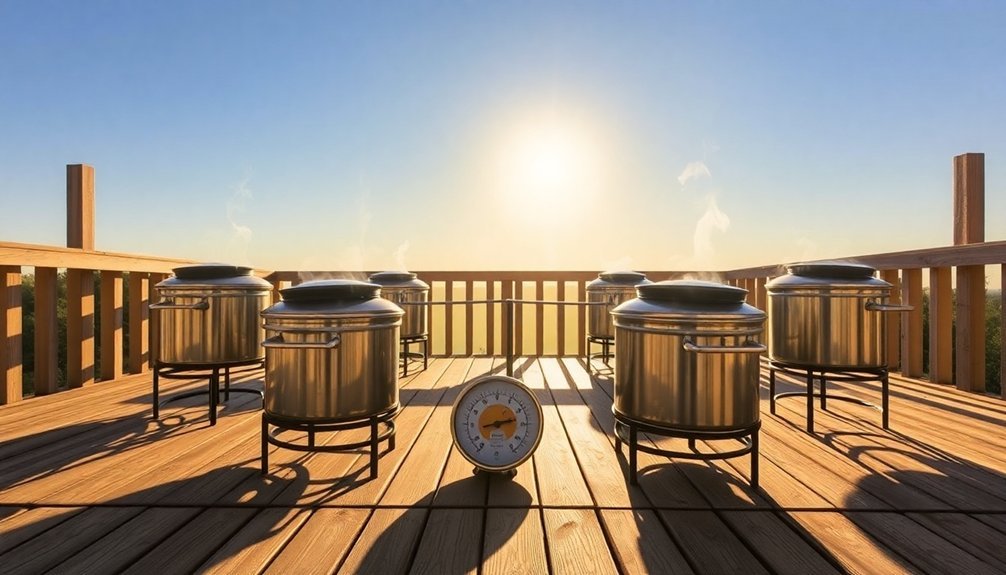
Proper sun tracking forms the foundation of successful solar cooking. You'll need to position your oven to face directly into the sun and tilt it appropriately to maximize sunlight exposure.
Use the E-Z Sun-track indicators to ensure optimal alignment and maximum temperature.
The best cooking window is between 11:00 am and 3:00 pm when the sun's intensity peaks.
To maintain consistent heating, realign your solar oven every 20-30 minutes as the sun moves across the sky. Set reminders if needed, since regular adjustments are essential for even cooking.
Place your oven in an unobstructed area facing south, and use reflectors to concentrate more sunlight into the cooking chamber.
Remember that weather conditions affect cooking times, so you'll need to adjust your approach on cloudy days.
Keep the food visible through the oven window to guarantee it's receiving direct sunlight throughout the cooking process.
Insulate Against Heat Loss
Once you've mastered sun tracking, the next key factor in successful solar cooking is insulation.
You'll need to create an effective thermal barrier to prevent heat from escaping while cooking. The right insulation can help you achieve and maintain higher temperatures, leading to faster and more consistent cooking results.
Key insulation options you can use:
- Crumpled newspapers around your cooking area for basic heat retention
- Neoprene sleeves combined with a cover to reduce heat loss by up to 62%
- Dark construction paper to absorb and retain heat effectively
For maximum efficiency, combine your insulation with other heat-retaining elements like reflective panels or clear plastic wrap.
You can also add thermal mass components such as water pans or bricks to stabilize temperatures and extend cooking times.
Keep Lid Closed Tight

Because keeping heat trapped inside your solar cooker is essential for success, maintaining a tight lid seal should be your top priority.
You'll want to use dark-colored lids, preferably black, as they absorb sunlight more effectively than lighter colors. Don't use aluminum foil as a lid since it reflects valuable heat away from your food.
Once you've started cooking, resist the urge to lift the lid to check on your food. Every time you open it, you're releasing heat and moisture, which greatly slows down the cooking process.
Instead of timing your dishes, use a meat thermometer to check for doneness. When you need to adjust your solar oven to track the sun, make sure you're keeping the lid firmly in place to maintain the cooking temperature.
Check Internal Meat Temperatures
You'll need to monitor two distinct temperature zones when cooking with solar heat: the ambient temperature of your cooking chamber and the internal temperature of your meats.
For food safety, check that poultry reaches 165°F, ground meats hit 160°F, and whole cuts of beef, pork, lamb, or veal reach 145°F.
Use a reliable meat thermometer inserted into the thickest part of the meat, avoiding bone or fat, to guarantee your sun-cooked proteins are safe to eat.
Safe Temperature Ranges
Three key temperature ranges guarantee your sun-cooked meats are both safe and delicious.
You'll want to monitor these temperatures carefully with a reliable meat thermometer to verify food safety.
- Whole cuts of beef, pork, lamb, and veal need to reach 145°F and rest for 3 minutes
- Ground meats must hit 160°F for complete safety, regardless of color
- All poultry requires 165°F, with no exceptions for doneness levels
When cooking fish, aim for 145°F to verify it's properly done.
Remember that ground turkey and pre-cooked meats also need to reach 165°F.
If you're stuffing poultry, both the bird and stuffing must hit that same temperature.
Don't rely on meat color or juices as safety indicators – your thermometer is your most trustworthy tool for sun-cooked success.
Two-Zone Heat Monitoring
Mastering proper temperature monitoring becomes even more effective with a two-zone heat setup.
You'll want to place your meat thermometer's probe into the thickest part of your food, avoiding any bones for the most accurate reading. With wireless thermometers, you can track temperatures remotely through your smartphone without lifting the grill lid and losing precious heat.
For peak results, set up your grill with a hot zone for searing and a cooler zone for gentle cooking.
If you're using charcoal, pile the coals on one side; for gas grills, turn on half the burners. You can move your food between zones as needed, letting the thermometer guide your timing.
Remember to set temperature alerts to notify you when your food reaches its target doneness.
Maximize Peak Sunlight Hours

To get the most out of solar cooking, understanding peak sunlight hours is essential. You'll achieve the best results between 11:00 am and 3:00 pm when UV rays are strongest. Consider starting at 10:00 am to preheat your cooker and brown ingredients, extending until 4:00 pm for the warming phase.
For ideal temperature control during peak hours:
- Position your cooker to face directly into the sun
- Adjust the cooker every 1-2 hours to track the sun's movement
- Use dark-colored ovenware with glass lids to maximize heat absorption
Baked goods like bread and cakes particularly benefit from peak sunlight cooking.
While summer allows more flexibility with adjustments, winter cooking requires closer attention to sun tracking.
Frequently Asked Questions
Can Frozen Food Be Safely Thawed in a Solar Oven?
Yes, you can safely thaw frozen food in your solar oven if you maintain temperatures above 140°F and immediately cook the food. You'll need to monitor temps closely and plan for longer thawing times.
How Does Altitude Affect Cooking Temperatures and Times?
At higher altitudes, you'll find water boils at lower temperatures, requiring longer cooking times. You'll need to increase baking temperatures, adjust leavening agents, and add more liquid to recipes above 3,500 feet.
What Happens if It Starts Raining During Solar Cooking?
If it starts raining, you'll need to move your food indoors and switch to an alternative cooking method. Rain blocks essential sunlight, halts the cooking process, and can damage your solar cooker's reflective surfaces.
Does Food Cooked in Solar Ovens Retain More Nutrients?
Yes, your food will retain more nutrients in solar ovens. You'll preserve higher levels of protein, starch, vitamins, and minerals compared to conventional cooking methods because solar cooking uses gentler temperatures and less liquid.
Can Solar Ovens Be Used to Sterilize Water for Drinking?
Yes, you can sterilize drinking water using a solar oven. When temperatures reach above 159°F for six minutes, it'll kill harmful bacteria. During sunny days, your solar oven can purify up to 3 gallons of water.
In Summary
You'll get the best results from your solar cooking by following these essential temperature guidelines. Keep your dark cookware well-insulated, track the sun's movement, and monitor your food's internal temperature carefully. Don't forget to maximize those peak sunlight hours and maintain proper food safety zones. With these tips, you're well-equipped to create delicious sun-cooked meals while harnessing nature's free energy source.


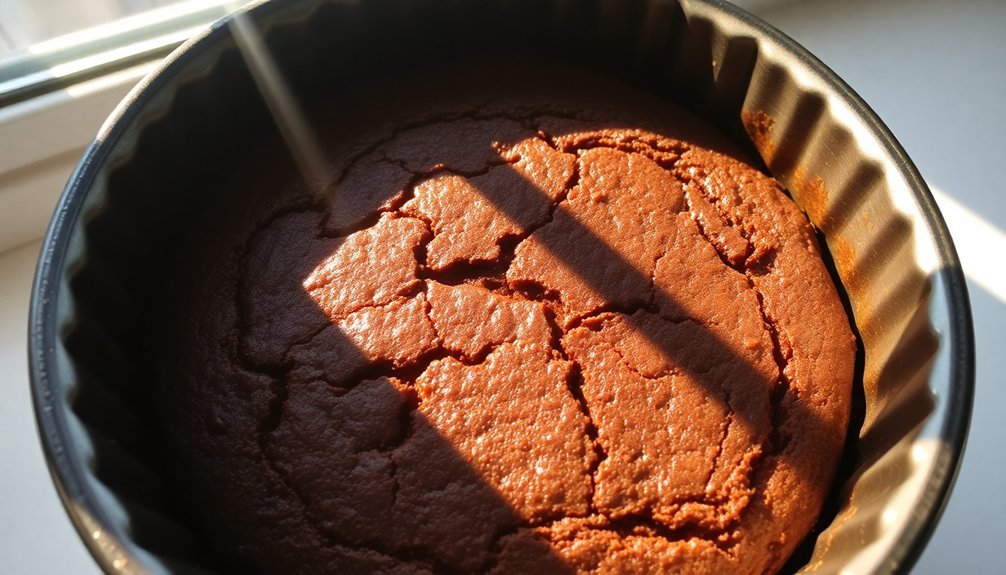
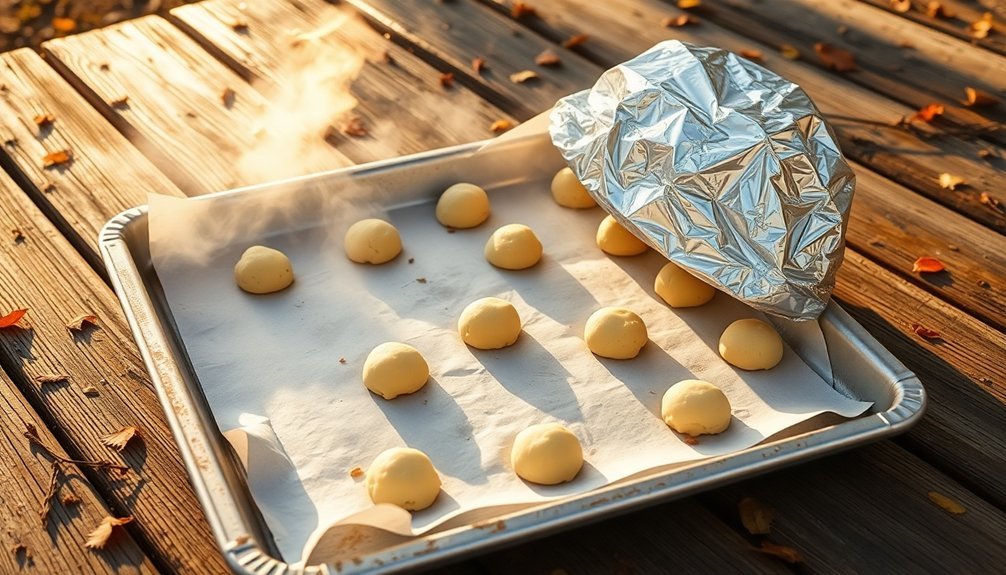
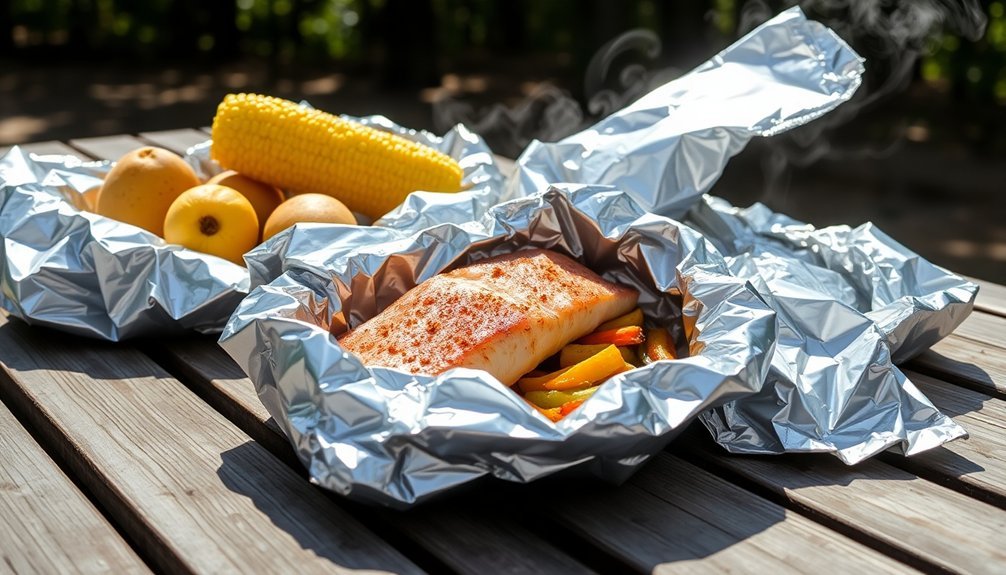
Leave a Reply